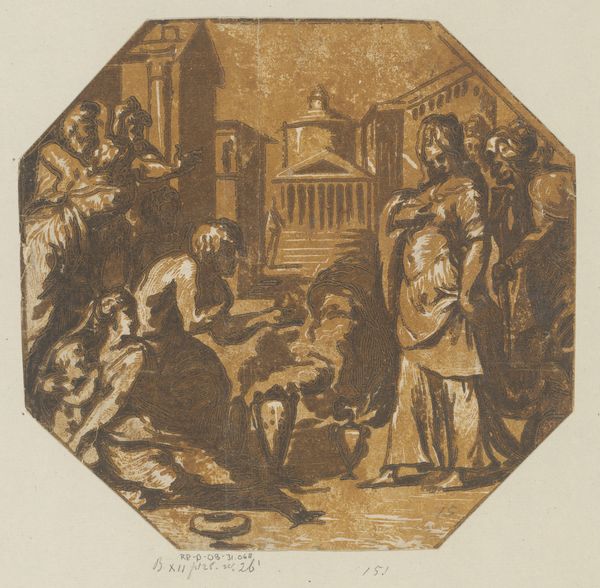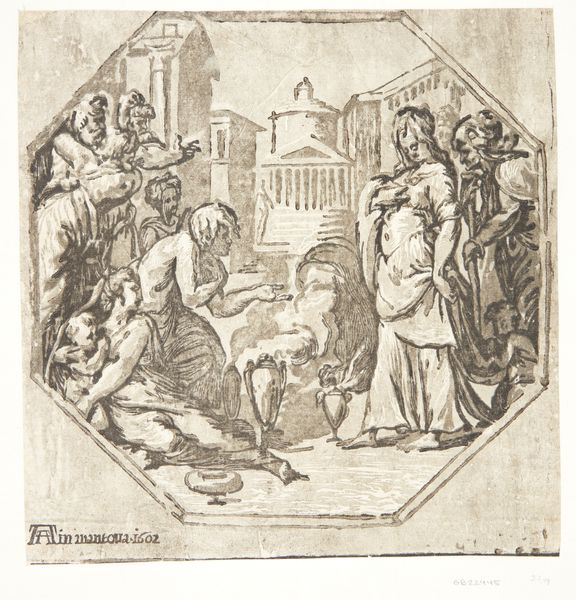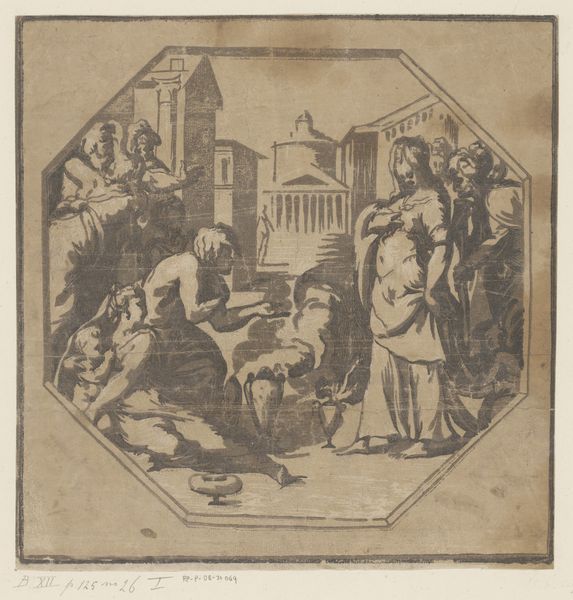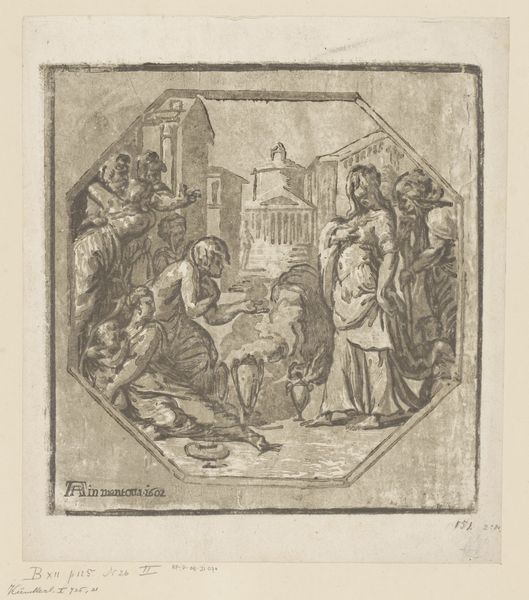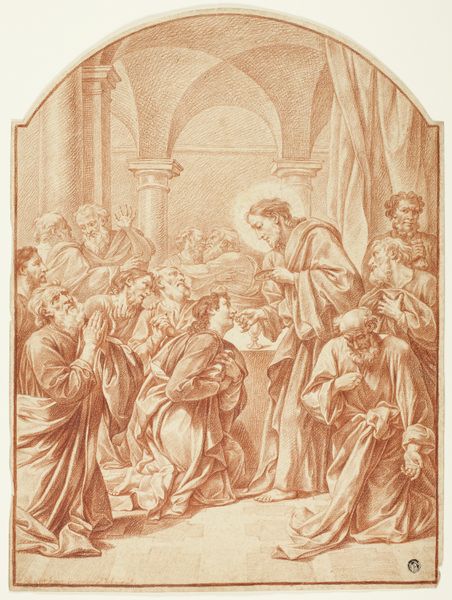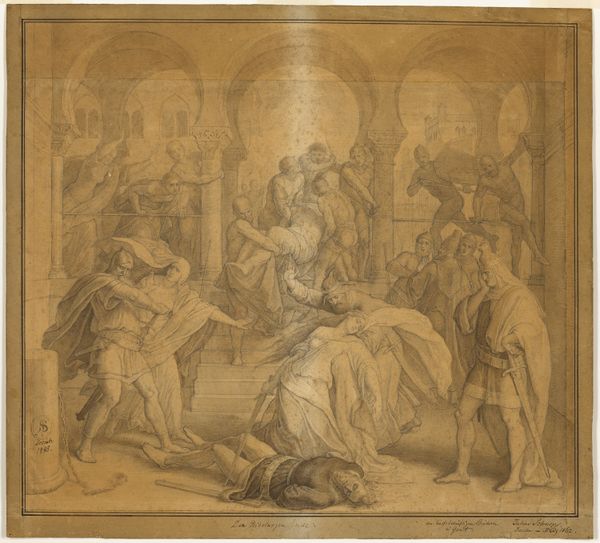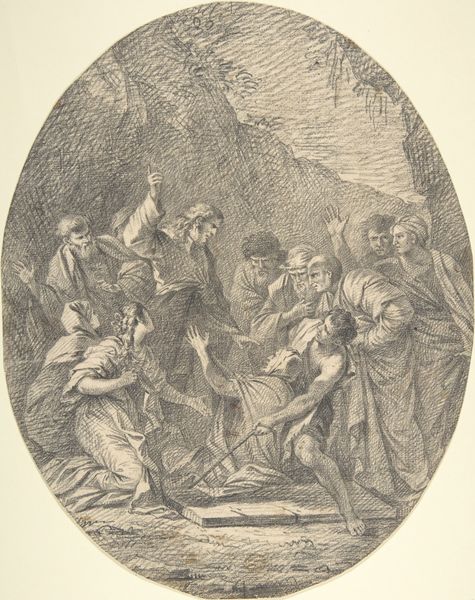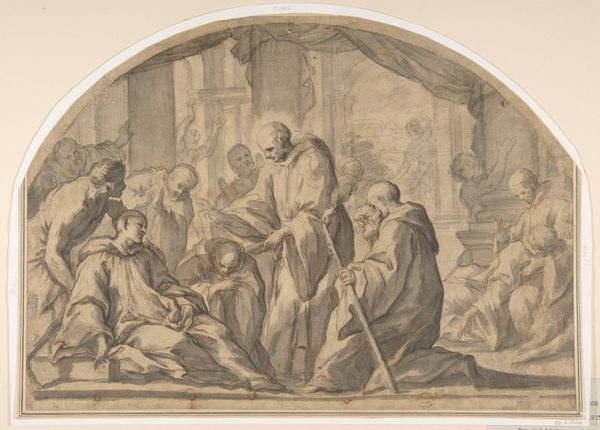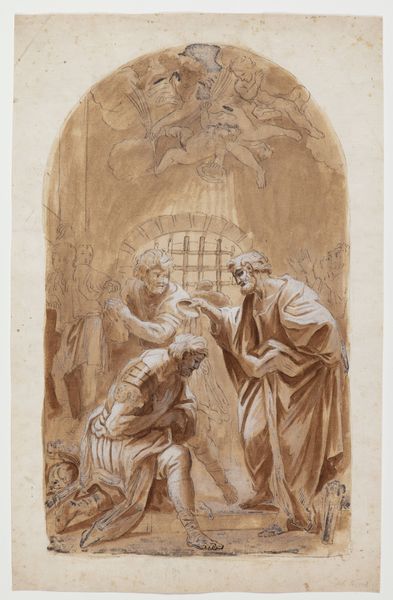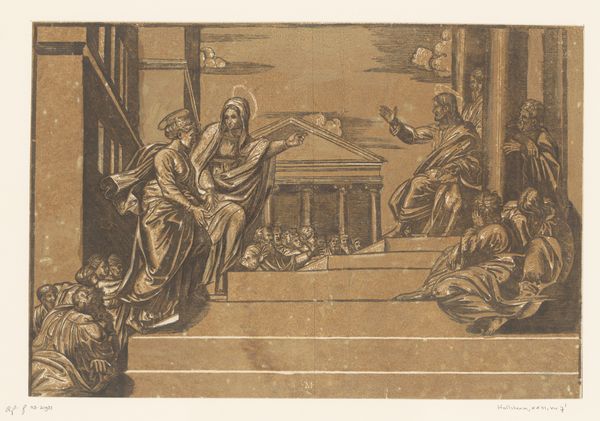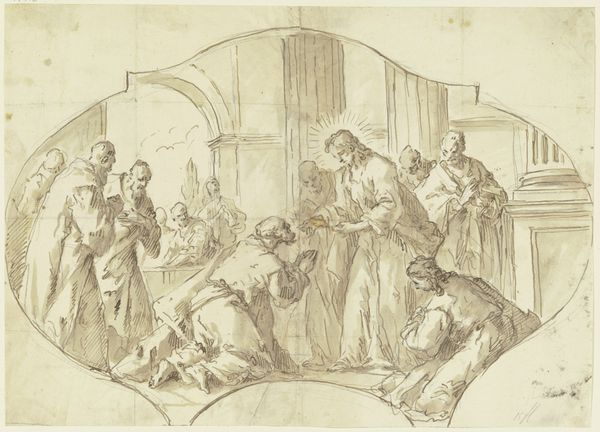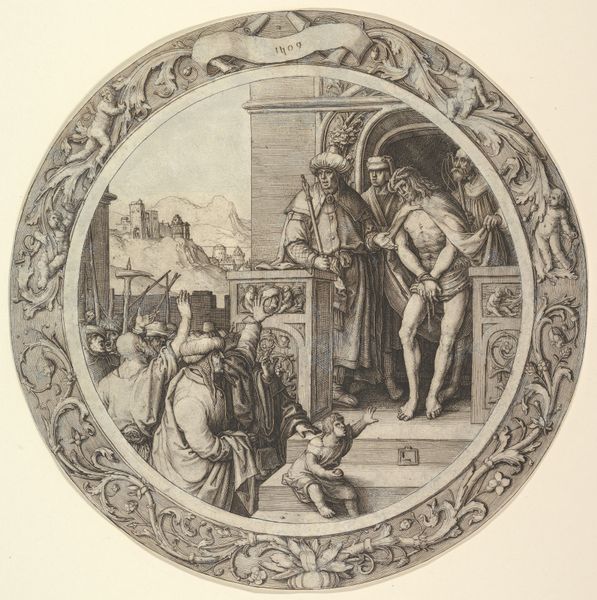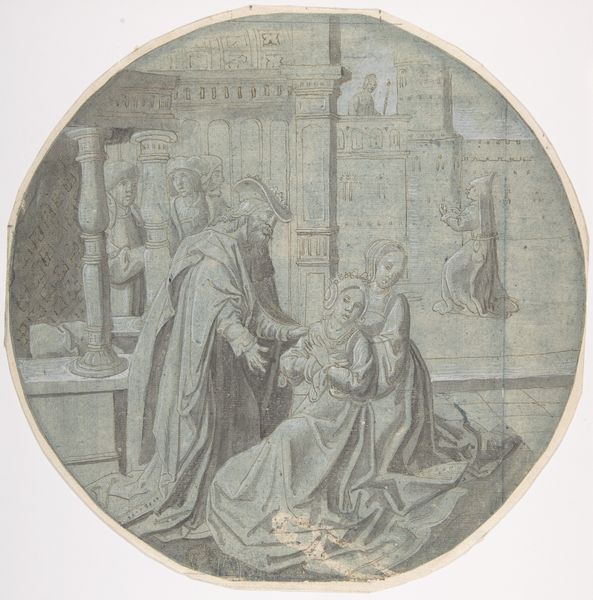
People paying homage to Psyche's beauty 1535 - 1545
0:00
0:00
drawing, print
#
drawing
# print
#
mannerism
#
figuration
#
11_renaissance
#
history-painting
Dimensions: Sheet: 9 5/8 × 9 11/16 in. (24.5 × 24.6 cm)
Copyright: Public Domain
Editor: This is “People paying homage to Psyche’s beauty,” a print by Niccolò Vicentino, created sometime between 1535 and 1545. I find the composition so compelling, and the scene so lively, yet rendered with a limited palette. What do you see in this piece? Curator: What strikes me is how this print, with its earthy tones achieved through the chiaroscuro woodcut technique, democratizes the story of Psyche. Consider the material—a print, inherently reproducible. This shifts the focus from the singular masterpiece to something more widely accessible. Editor: That's an interesting perspective. I hadn't considered the role of the medium itself. So, you see the act of making a print as crucial to understanding its message? Curator: Absolutely. It makes one wonder about Vicentino's workshop, the labour involved, the woodblocks used and re-used. Think about who had access to prints like these in the 16th century, versus a painting owned and commissioned by a single patron. Editor: So, its accessibility allowed this print to become an important instrument in disseminating classical myths to a larger segment of the population. Are there particular elements in the composition that underline that context for you? Curator: Look at the array of figures – their gestures, their varying states of undress. It brings into view a diverse community. This isn’t just about high society; it's about a broader, possibly aspirational, consumption of culture. The very act of paying homage to Psyche hints at how earthly beauty had become a sort of consumer item. Editor: That makes the title especially potent! Considering how prints are made and consumed really sheds new light on the subject of the piece. Curator: Precisely. We understand a lot more by thinking of the image not just in its classical subject, but how it was created and received by a developing art market of its day.
Comments
No comments
Be the first to comment and join the conversation on the ultimate creative platform.
